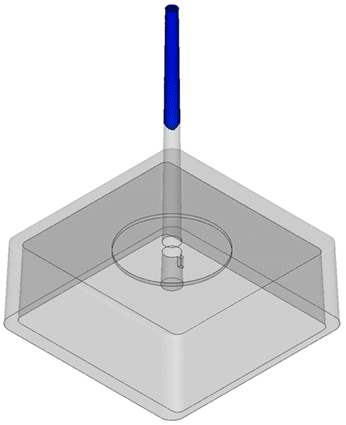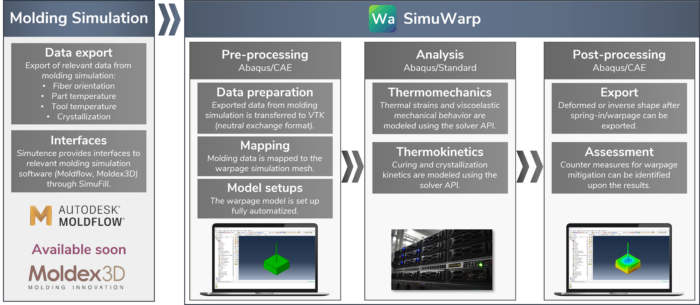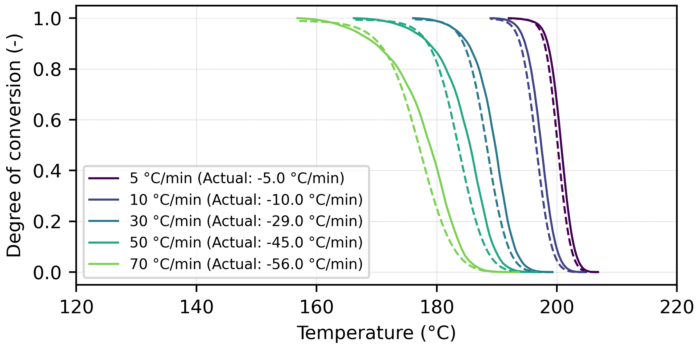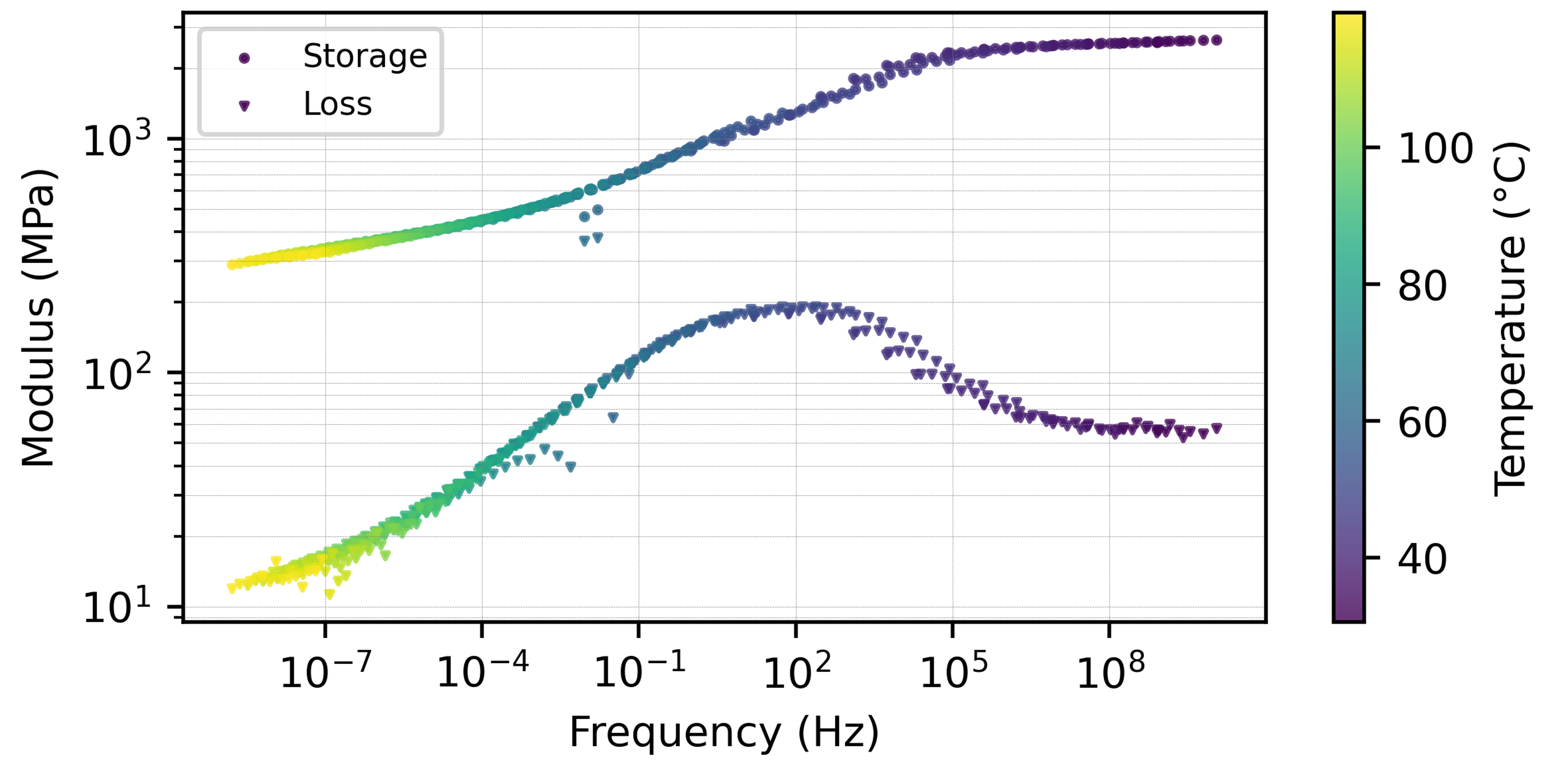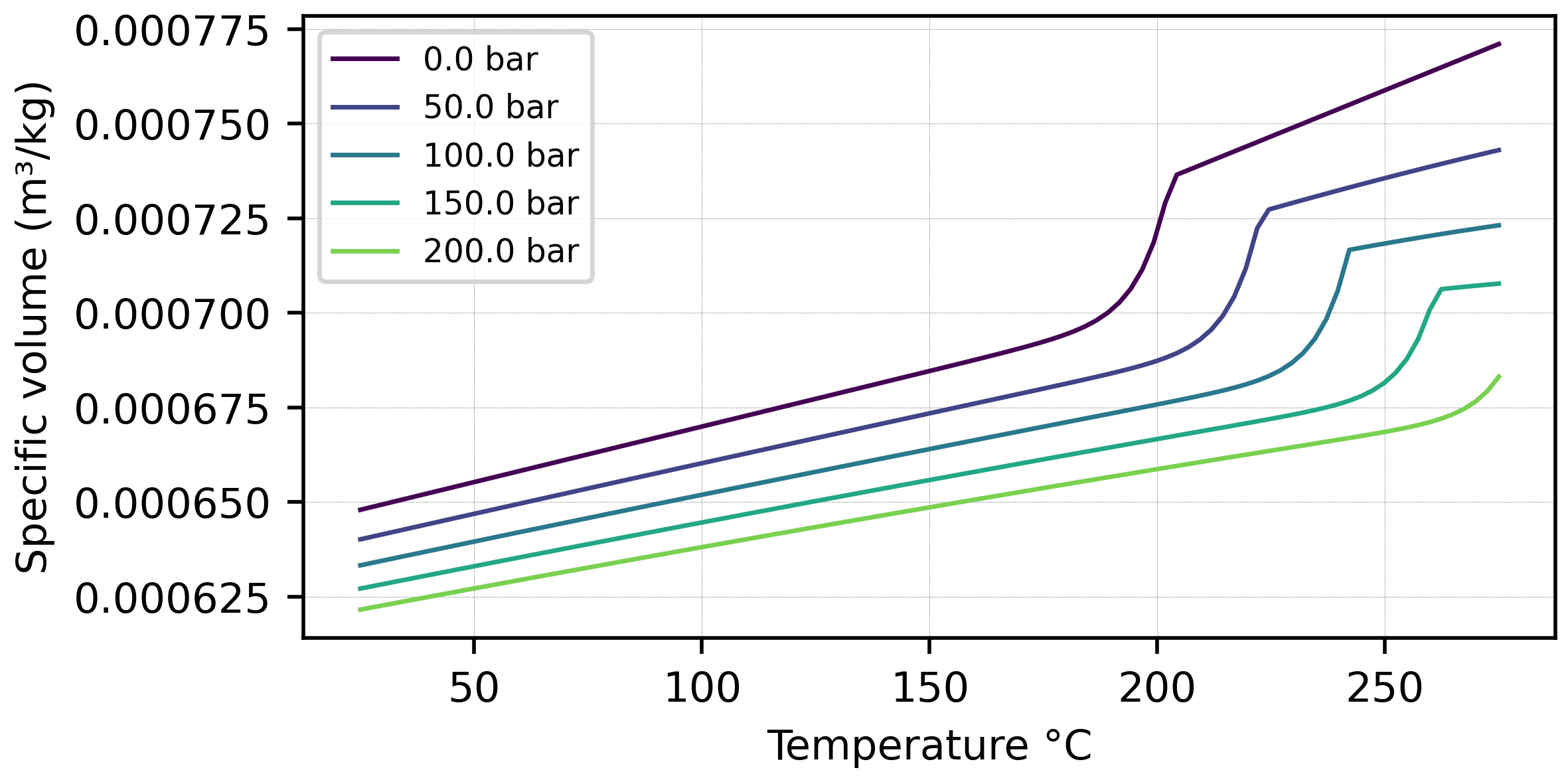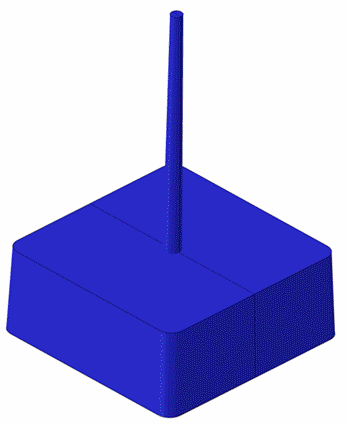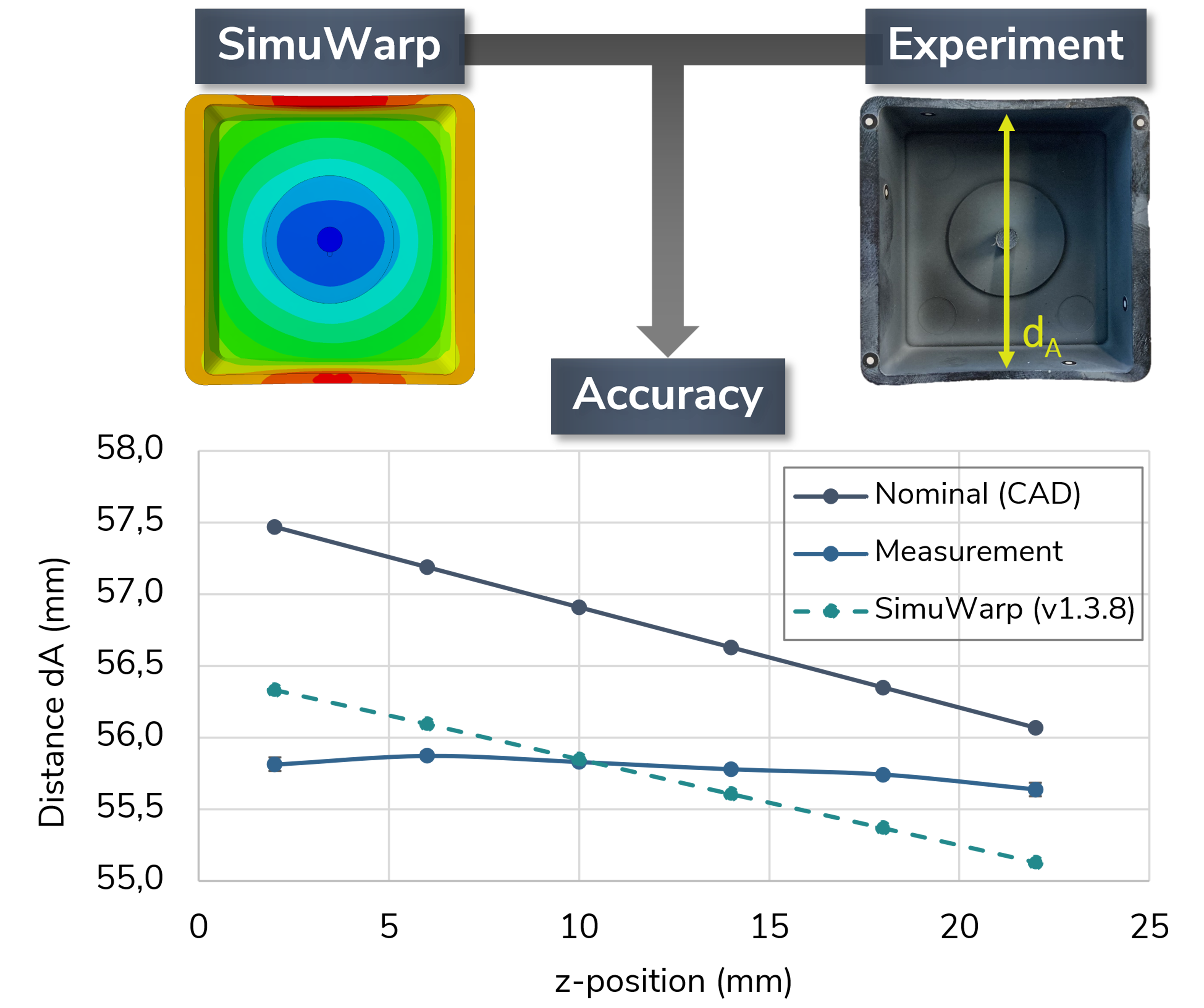Key takeaways
- Simutence provides a modular virtual process chain upon add-ons for commercial software (Abaqus and Moldflow)
- SimuWarp enables sophisticated material modeling for part warpage and residual stress analyses including a fully automatized model setup
- Accurate warpage prediction enables digital design engineering and a reduction of required mold recursions.

